Table of contents
This product has been in the flooring market for many years, widely used in areas that require high resistance to chemical and abrasive attacks and where the accumulation of microbes must be avoided.coating and the growth of the trend for seamless flooring, the demand for bringing it into the interior of homes has grown and become widespread.
The possibility of fields of application of this material is diverse, such as on slate, cement, natural stone and ceramic floors. Carolina Multini, architect of the company Studio Mac Madequartz explains a little more: "Liquid porcelain tile can be applied on practically any surface.This regularization can be done by the contractor himself". The only contraindication is to avoid its application on asphalt or tar and places that, in the hours following the application, reach temperatures below 10 °C or above 35 °C.
See_also: Wooden Chair: 40 models that enchant everyone with their charmWhat is the difference between regular porcelain tile and liquid porcelain tile?

The confusion generated between common porcelain tile and liquid porcelain tile is still great, especially among those who are beginning to venture into the world of construction and renovation. Both materials are very distinct, once the main differences are understood it becomes easy to differentiate them.
Common porcelain tiles consist of a solid ceramic tile made of compacted minerals heated at high temperatures, the result is a highly resistant material that must be applied to the floor piece by piece.resistance.
Liquid porcelain tile, when applied over other types of flooring, facilitates renovations and avoids dirt. Besides smooth flooring it is possible to find other styles to decorate your home, such as 3D and customized models. In these two cases, first the adhesive is applied and then the liquid porcelain tile is used. It is possible to play with optical illusions such as imitating the appearance ofseabed, beach sand, grass, among others. Creativity is free.
Liquid porcelain tile: urethane, polyurethane or epoxy?
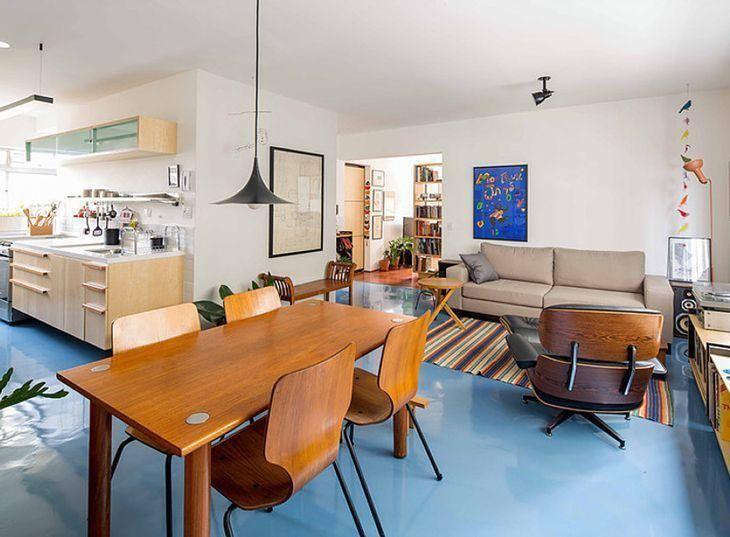
Although epoxy is the best known, liquid porcelain tile can be made up of other resins, which can affect the way the floor will behave after application. Therefore, pay attention to the components when buying. Besides epoxy, it is possible to find polyurethane and urethane on the market.
The architect explains that polyurethane started to be used more recently, with greater flexibility than epoxy, it usually keeps up with the weather and, for this reason, its use is indicated for external areas. It is also highly resistant to falling objects and heavy loads. Due to its high dilation and retraction characteristics, it will hardly present cracks, fissures, or splits when exposed to the weather.Its flexibility can even be compared to asphalt blanket. The use of this resin is very common in industrial areas, hardly indicated for residential areas.
Urethane, on the other hand, is derived from polyurethane, also high performance, odorless and solvent free. It has high protection against chemicals, resistance to thermal shocks, and flexibility to receive heavy traffic. However, it is important that it be applied in an area with little incidence of UV rays, in order to prolong the durability of the material. Its expansion is similar toLike the other resins, the impermeability and the monolithic character are still present. Its aesthetics is more rustic, with a limited variety of colors.
In general, all resin types result in a monolithic, long-lasting, glossy floor, but epoxy is still the most recommended for residential areas.
Epoxy Resin
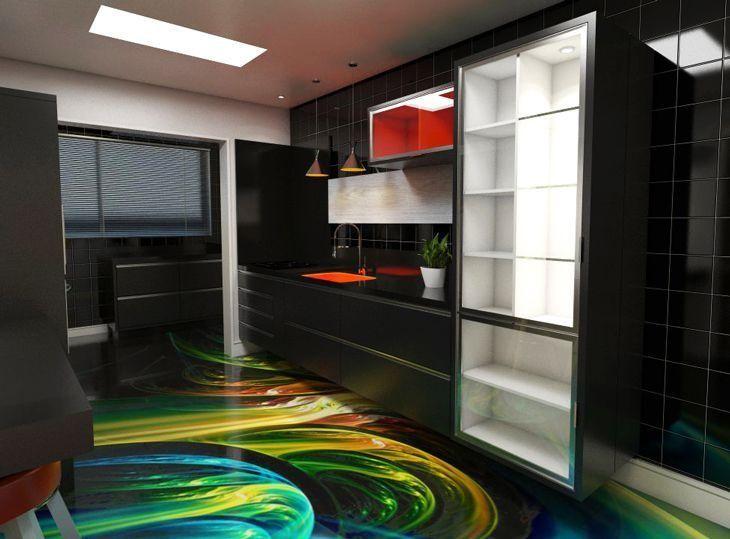
Epoxy was the first type of resin developed and, perhaps because of this, the most popular. Its finish is considered to be of high quality, besides being waterproof, this type of resin is easy to clean and ideal to prevent possible contaminants from infiltrating the floor.
But, it is necessary to pay attention to the area of the house that will receive it, because its rigid structure, when in external areas or sensitive to weather changes, can end up cracking. In the same way, its coloration can also be harmed when in direct contact with UV rays. Dragging heavy objects over the floor can also cause cracks.
See_also: How to remove hair from black clothing: Learn how to remove it effectivelyIts cleaning must be done, preferably, with neutral detergent, to remove only the superficial dirt. Therefore, to prolong even more the duration of your floor, consider closed areas, with few climatic changes and without heavy objects that need to be moved periodically.
The price of epoxy liquid porcelain tile can vary according to the type of floor that will receive the application, but it is possible to find it, on average, starting at R$ 150/m².
How is liquid porcelain tile applied?

The application of liquid porcelain tile requires different precautions, starting with the preparation of the surface. This initial stage is important, since it can interfere in the long term result. If no care is taken in preparing the floor, the resin may not be absorbed and the floor will probably come loose. For this not to happen, there are preparation methods that seek to eliminate any type of residueIt is up to you, together with the company that will do the application, to choose the best method for your environment. The preparation options can be combined for best results, such as sanding followed by milling, in case the former is not enough to remove all the impurities from the soil.
According to Multini, "with the surface already regularized, a sealer is applied, a product that will give greater adherence to the liquid porcelain tile. After drying, the application of the material begins with a squeegee to level the entire application area, and then a roller called a 'bubble breaker' is applied, which as the name implies, this squeegee eliminates bubbles caused by the composition of the material.The cure time varies from 30 to 40 minutes, so the process must be done quickly in order not to lose the material.
The price to be charged for the product will vary according to the thickness and amount of material used, explains Carolina Multini. Generally, thicknesses vary from 2 to 6mm and is indicated according to the surface where it will be used.
Advantages of using liquid porcelain tile

At first glance, this material is widely sought after for the fact that it gives the floor a unified finish, but its advantages are numerous. Among them:
- High chemical, abrasive, and mechanical resistance, allowing its use in the most different environments;
- Rapid application, which avoids the mess present in other types of renovation. In a few hours it is possible to renew and modernize your corner;
- An impermeable surface, which facilitates cleaning and, if proper care is taken, conservation. Substances such as oils, fats and liquids in general are impenetrable on this type of floor;
- Common porcelain tiles, even the so-called rectified ones, have visible joints that with time accumulate impurities and become even more evident, which does not happen with liquid porcelain tile, which is proof against contaminating agents and microorganisms;
- It is possible to customize your floor, from the intensity of the shine, to the choice of a diverse range of colors and styles of stickers, illustrations, prints, and more;
- It can be applied on the most different surfaces. The only exception is for soft or spongy floors, because a mobile base can cause the already applied hard floor to crack;
- Its maintenance is simple and cheap. It is advisable to use only neutral soap and water for cleaning, avoiding chemical products or petroleum derivatives as much as possible, because they can damage the floor.
15 environments with liquid porcelain tile for inspiration
The images used in the application of the flooring, known as 3D, are made in high definition in printers and can easily be customized to the customer's taste. For those who want plain colors, it is possible to dare by opting for strong tones such as red and black. Check out some environments that will certainly inspire you to adhere tothis trend.
1. the absence of joints enlarges the space and helps cleaning

The floor reflects the lights in the room and improves the illumination
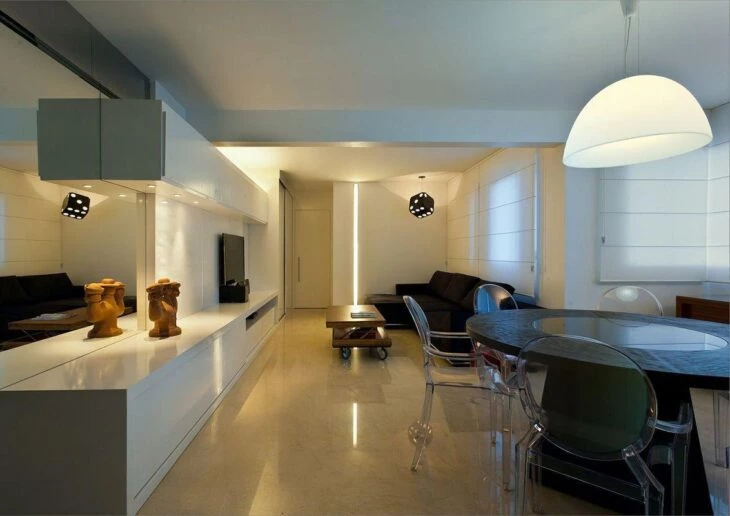
3. it is much easier to achieve a clean decor with liquid porcelain tiles
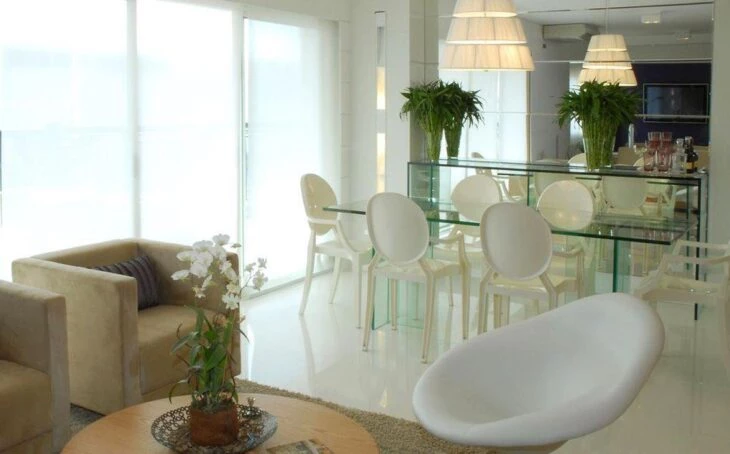
4. use lighter shades on the walls to balance with the dark floor

5. yellow attracts the eye and makes the composition even more interesting
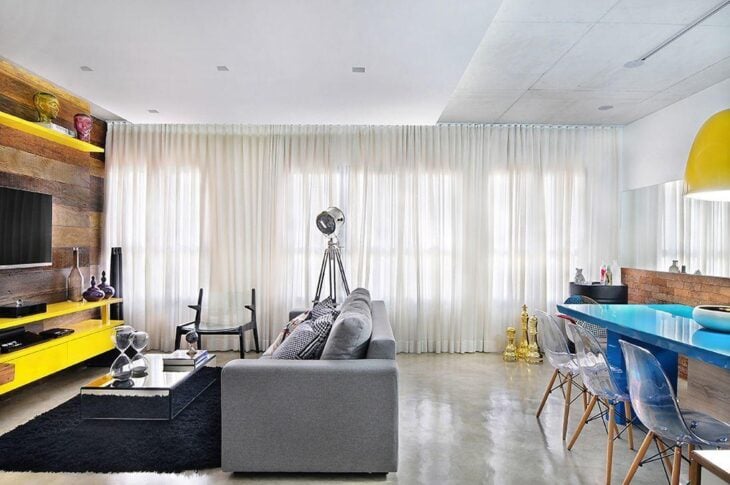
6. white flooring is the darling of most, because it goes well in any environment

7. colors such as red are not so common, but bring a unique look to the environment

8. the pattern possibilities are varied with liquid porcelain tile
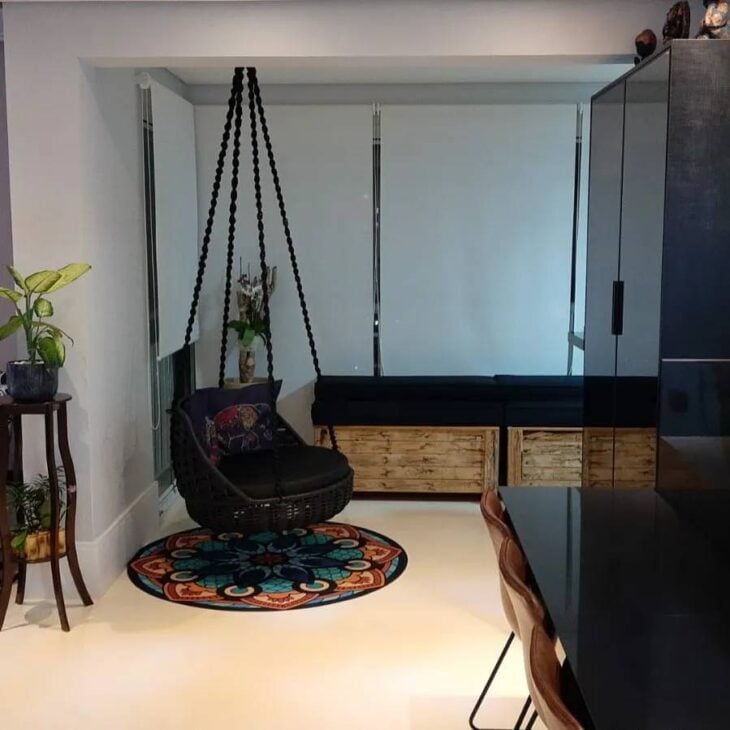
9. decorative items make a difference and in this case they matched the floor very well

10. granite can be used together with liquid porcelain tile to incredible effect

11. the homogeneous look of this flooring draws attention and makes the room much more elegant
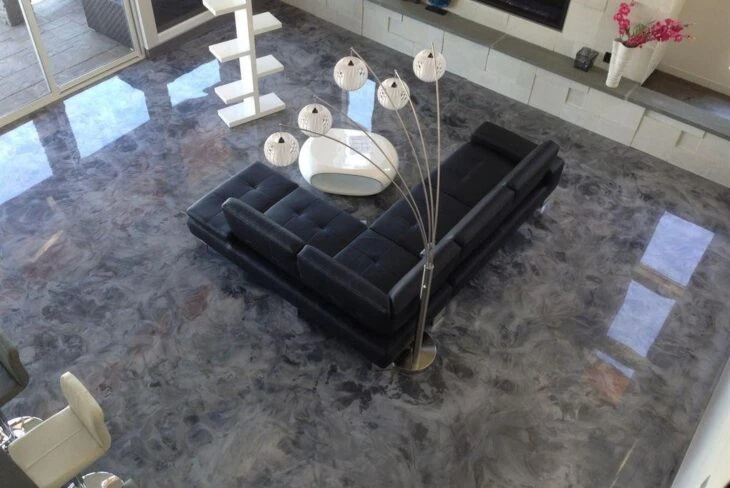
If you think that the time has finally come to give your home a new face, don't waste any time and invest in liquid porcelain tile. Choose the type of resin and theme that best suits your space and get specialized labor, so you can guarantee an amazing result without future problems.



